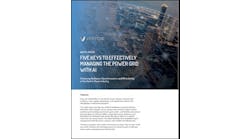April 4, 2013
If you’re an energy efficiency geek and your refrigerator breaks down, you probably think, “Yes! A chance to buy a new super energy-saving model.”
But you’re the exception. Most consumers consider price tag before ENERGY STAR certification. Human nature being what it is, they choose the cheaper model even if it costs them more in utility bills long term. Here’s what they don’t know. They can get a much better deal on the high efficiency model and perhaps pay no more than they would for the energy guzzler – if they take advantage of rebates their utility might offer.
Buyers often are unaware of these incentive programs. Sure, the utility at some point sent out a notice about the rebate, but that was long ago tossed out and forgotten.
A Menlo Park, California company recognized this problem and figured out a way to put the rebate information literally in the palm of the buyer’s hand, right when it’s needed. It’s a cell phone app.
The EcoRebates app represents one of a growing number of ways the energy industry is using the cell phone to encourage consumers to manage their energy use more efficiently. (See Part I of this series about how a New York company helps customers manage their air conditioning units remotely via cell phone.)
Utility incentive programs aren’t easy to track. They are often the product of complex conservation plans devised annually by utilities and then reviewed extensively by state public utility commissions. New incentives are added, and some last only until budgets run out or utility energy efficiency goals are met. So rebates come, go and change.
EcoRebates tracks the changes nationwide and maintains a database by zip code. Its program automatically matches qualifying products (by model) with incentives available within a zip code. The company has partnered with several major retailers, such as Best Buy, Lowes, Home Depot, Menards, H.H. Gregg and Sears, as well as manufacturers like Whirlpool, Electrolux, Trane.
So while in the store with cell phone in hand, the consumer can get on the proper website, check on the desired model, and see what’s available in rebates or incentives. The site shows how much the refrigerator (or other appliance) will actually cost after the rebate. In some cases, store employees have mobile units with the app installed and can help shoppers who don’t have cell phones. It’s also possible to do incentive shopping from home on a computer.
Brett Battles, CEO of EcoRebates, points out that the way consumers shop has changed and become more fluid.
“Providing mobile shopping tools – like our Rebate Finder – is critical to influencing decisions, especially for ‘considered’ purchases like appliances and home improvement products. With mobile, consumers have instant access to real-time savings opportunities on energy efficient products,” he said.
This kind of app offers a clear consumer advantage: less pain to the pocketbook. And it’s a good sales strategy for stores and manufacturers. But larger societal benefits accrue too – and are the real reason such incentives exist.
Utilities and central grid operators can do only so much to bring our power grid to maximum efficiency. Those who generate and distribute the power are only half the equation. The energy user represents the other half. How much energy we use, and more importantly when we use it, profoundly influences how many power plants are built – which in turn determines both electricity rates and environmental costs.
Policymakers realized a long time ago that cajoling and lecturing the energy user has no impact (except to annoy us). Programs like this one save us energy, while we are busy trying to save money. And it does so by using a gadget that seems to almost constantly have our ear – and eyes – the cell phone. Next week see Part III of ‘Energy efficiency finds its cell phone’ about what cell phones can reveal to us about energy.







